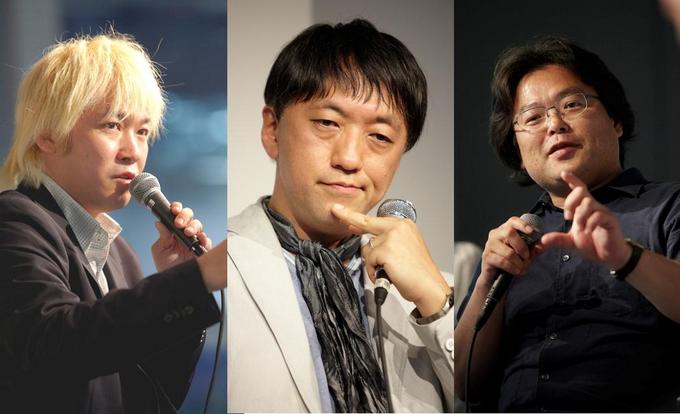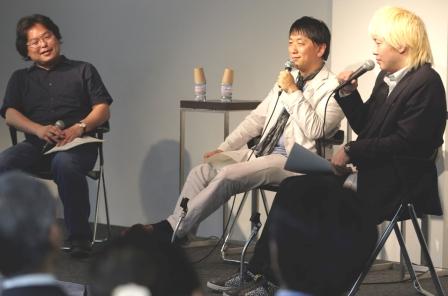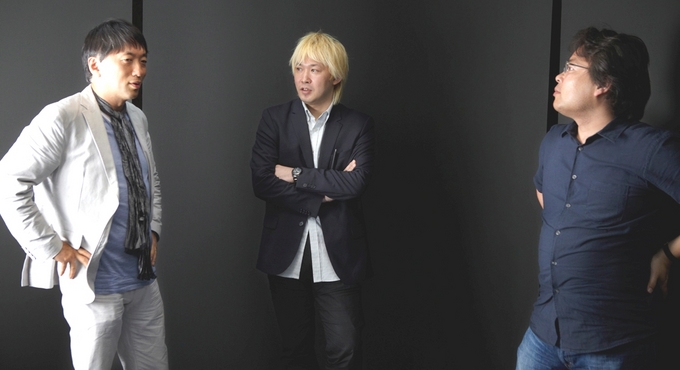Taking into Consideration Actions of Young People in Our Culture and Society After 3/11 (Part II)
Shinji Miyadai (Sociologist)
Taro Igarashi (Architecture Critic)
Daisuke Tsuda (Media Journalist)
Utilizing A Town's History and Identity In Its Reconstruction
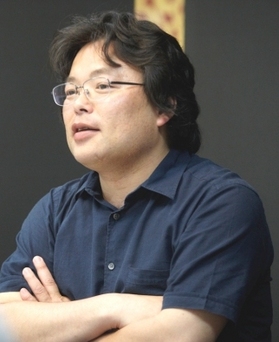 IGARASHI: The number of residents in the Tohoku area of Japan has been decreasing even before the earthquake disaster. According to our laboratory research in the town of Onagawa, the number of residents decreased from 18,000 in 1965 to about a current level of 10,000. Because the town has not merged with other towns in the area, this number is not camouflaged. Another aspect around the population decline is that previously the town did not find the need to merge with others because it drew its wealth from the nuclear power plant. This also gave way to a steady decline in the number of young people in the town. Now its infrastructure is destroyed along with its industry. Is there any possibility of young people moving into the area, injecting hope and vitalization? And how could social media and IT communications become involved in these issues?
IGARASHI: The number of residents in the Tohoku area of Japan has been decreasing even before the earthquake disaster. According to our laboratory research in the town of Onagawa, the number of residents decreased from 18,000 in 1965 to about a current level of 10,000. Because the town has not merged with other towns in the area, this number is not camouflaged. Another aspect around the population decline is that previously the town did not find the need to merge with others because it drew its wealth from the nuclear power plant. This also gave way to a steady decline in the number of young people in the town. Now its infrastructure is destroyed along with its industry. Is there any possibility of young people moving into the area, injecting hope and vitalization? And how could social media and IT communications become involved in these issues?
MIYADAI: It would require some rational thinking. For instance, when the first nuclear plant was installed in Fukushima over forty years ago, the city was serious about their management slogan, "Fukushima Shall be the Next Sendai," though logically there wasn't really any chance. The decision to locate a nuclear plant in the out-country came from a scheme of the Act on Compensation for Nuclear Damages, enacted in 1961, rather than a concern for human life. Under that scheme, in the case of an accident, when the power company cannot undertake unlimited liability, and if the company is unable to cover the full compensations, the government will be liable for anthing that is left. However, since there's a limit to the national budget, there would be absolute chaos in the event the total financial damage was too large. So the choice of the out-country location of the site was intended to help limit the total possible compensations in the event of disaster. Therefore, Fukushima developing into a place like Sendai where people flock to various facilities built around the plant could never happen.
I wonder how much of this buzz the local community seriously considered. Mass media didn't report appropriate information on this.
Nor did we reflect on the Act on Compensation for Nuclear Damages and Power Source Siting Laws of 1974. Power Source Siting Laws were set up to apply a considerable amount of national funds for areas that enticed nuclear powers and became the main reason for dismissing the discussion of the technical rationality of nuclear power. Even from here on in, it seems as if there was an option for reconstruction of the affected areas by allocating the large funds given by the government to entice nuclear plants. However, as I just said, from what I understand, it has been logically impossible to have "Fukushima as the New Sendai" since its creation over 50 years ago.
I understand that Makoto Iokibe, the Chairman of the Reconstruction Design Council, proposed separating the issue of reconstruction from the debate over the nuclear power at the reconstruction meeting but that is simply not possible as you can understand from my story. And now, since people's risk awareness is higher about nuclear accidents, the areas that could never be bustling areas have even expanded as long as nuclear sites are kept. The only way to create a bustling spot for people is to decommission the nuclear plant. Without considering these things, it is hard to turn the true reconstruction into a reality.
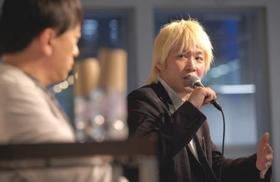 TSUDA: What was striking to me while I travelled the area within a 30km to 50km radius of the nuclear plant, such as Soma and Minami Soma, was that even though the distribution of goods started to flow and most areas besides the waterfront began to finally regain normality, within this momentum of enthusiasm hesitancy still persists. This is because all efforts for reconstruction would amount to nothing if the nuclear radiation worsens and the evacuation area expands to the 50km mark. Many people said that having this possibility while trying to reconstruct is tougher to deal with than their current conditions at the moment. Are there going to be flagwaving young people who'd march into this and chant reconstruction? Is it possible, say for Fukushima, to come up with an idea for the entire prefecture where they adopt a specific district government with a new plan in which young people could assume some kind of role?
TSUDA: What was striking to me while I travelled the area within a 30km to 50km radius of the nuclear plant, such as Soma and Minami Soma, was that even though the distribution of goods started to flow and most areas besides the waterfront began to finally regain normality, within this momentum of enthusiasm hesitancy still persists. This is because all efforts for reconstruction would amount to nothing if the nuclear radiation worsens and the evacuation area expands to the 50km mark. Many people said that having this possibility while trying to reconstruct is tougher to deal with than their current conditions at the moment. Are there going to be flagwaving young people who'd march into this and chant reconstruction? Is it possible, say for Fukushima, to come up with an idea for the entire prefecture where they adopt a specific district government with a new plan in which young people could assume some kind of role?
MIYADAI: In putting the reconstruction plan into action, if we make decisions democratically according to people's needs, there is a question of whether or not they are truly made to benefit the local people. I happen to have a close connection with Okinawa and have thought of scenarios of the U.S. base's return to Okinawa. In Okinawa, because of their uncertainty of how long they can rely on the U.S. Army's support, a landowner's need for cash and the local people's need for convenience were taken into consideration and subsequently they built a huge shopping mall that is open late at night on the returned lands of both Chatan's American Village and a communication site in Ameku. As a result, the area has become a place where even the local people have no attachments to the area. In other words, people will simply move to a more convenient place with more amenities if those aspects were to be the only attraction of a town. There is a chance that the town could become replaceable where no one has any attachments if reconstruction plans seek to prioritize convenience based on the local residents' need. People will eventually run off to an even more convenient place with more amenities and in the end, it will be a place where even weeds may not grow. Since I'm seeing a part of Okinawa actually limping toward this, it would be hurt to see the affected areas following the same pattern.
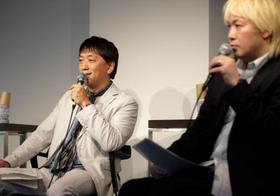 In fact, this can happen anywhere in the world. I often mention the plan argued by J. Baird Callicott, an environmental ethicist, where "You can protect the dignity of people by having redevelopment and urban planning that do not answer people's immediate needs." It's good to "focus on town and not on people." We should make reconstruction efforts by reviewing the town's history in details that consist of the positions of natural habitats and architectures and people's behaviors. Think, for example, how a "creature" called Rikuzen-Takata City lived in the past and what is the most natural way for it to live from here on? In fact, focusing on the town and not on people and not responding directly to people's needs would protect people's dignity and the irreplaceable bonds between people and place, which may become quite important in this reconstruction.
In fact, this can happen anywhere in the world. I often mention the plan argued by J. Baird Callicott, an environmental ethicist, where "You can protect the dignity of people by having redevelopment and urban planning that do not answer people's immediate needs." It's good to "focus on town and not on people." We should make reconstruction efforts by reviewing the town's history in details that consist of the positions of natural habitats and architectures and people's behaviors. Think, for example, how a "creature" called Rikuzen-Takata City lived in the past and what is the most natural way for it to live from here on? In fact, focusing on the town and not on people and not responding directly to people's needs would protect people's dignity and the irreplaceable bonds between people and place, which may become quite important in this reconstruction.
TSUDA: Which kind of people would know about the town's history and identity? Would it be the elders?
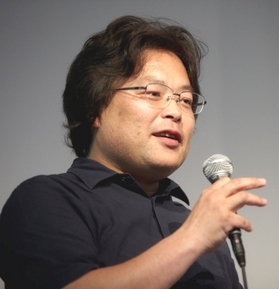 IGARASHI: For example, there's a book by Robert Moses and Jane Jacobs, just recently translated into Japanese, that interestingly summarized two opposite methodologies of urban development (Wrestling with Moses: How Jane Jacobs Took On New York's Master Builder and Transformed the American City).
IGARASHI: For example, there's a book by Robert Moses and Jane Jacobs, just recently translated into Japanese, that interestingly summarized two opposite methodologies of urban development (Wrestling with Moses: How Jane Jacobs Took On New York's Master Builder and Transformed the American City).
Moses is an expert of grand design and looks at the city from top to bottom and Jacobs observes cities and narrows them down to small communities. However, if we set "people" as a force who look for towns like Tokyo or any other familiar suburbs, from what Mr. Miyadai just said, it would justify towns with banausic convenient houses as long as they are blocked with levees whether it is Ishimaki or other places.
MIYADAI: There's a group of young architects in Okinawa that I'm associated with and their style is, partly because of my idea, through repeated workshops, to build houses and housing complexes by proposing how the housing complex should be based on the origin of the place and the way people have lived in the area, and altering people's initial needs to some degree. Assuming that "architectural and urban development that meet direct needs of people deprive people of dignity," is it possible not to respond to people's direct needs? It seems possible when you look at the past results. When there are advocates that state, "Convenience and amenity are great but these things would only spread comfortable but lonely lifestyles like any other town," other residents can be convinced ofputting their immediate needs aside and moving forward. So the question is whether there will be advocates like that.
IGARASHI: With the current situation, while there wasn't much we architects could do right after the disaster and I felt that we were not trusted by the society, that is the where we could earn the public trust back. We need to make long-term spatial proposals based on factors including the geographical and environmental elements that are inherited from the past rather than based on current desires.
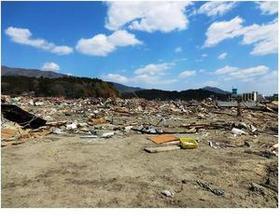 TSUDA: In that sense, I am interested in how young people will be involved in building a community from geographical memories of the place. In fact, there are less and less young people in the Touhoku area and this earthquake disaster may further increase that trend. In the coming reconstructing efforts, will ever-shrinking communities in Tohoku be able to welcome outsiders? If they do, can young outsiders take initiatives within that community?
TSUDA: In that sense, I am interested in how young people will be involved in building a community from geographical memories of the place. In fact, there are less and less young people in the Touhoku area and this earthquake disaster may further increase that trend. In the coming reconstructing efforts, will ever-shrinking communities in Tohoku be able to welcome outsiders? If they do, can young outsiders take initiatives within that community?
From Tsuda's Flickr
MIYADAI: Since about two years ago, the idea of Augmented Reality has been a popular topic among young people. For instance, there is a popular iPhone application called "Sekai Camera" which calls up various information about streets from its enormous database when you view a town through your display or a viewfinder. It may be possible to utilize this in finding out the origin of the land and achieve what Shinichi Nakazawa would call "earth diving". I think the information technology that young people use is the most powerful tool for sharing information about the place, what kind of place it is including knowing that which is not visible. It is possible that architects will share that kind of visible and invisible information by encouraging the use of technology.
IGARASHI: There are new applications that you can layer old maps onto the current maps of Tokyo after seeing places that used to be ponds and swamps liquefying in Chiba and Saitama. In that sense, people may be more conscious of geographical past.
Should Young People Visit The Affected Areas?
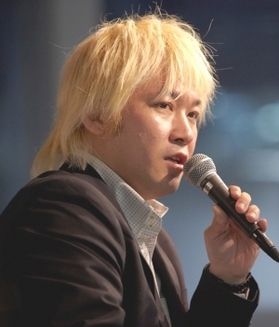 TSUDA: There are increasing numbers of volunteers such as young college students that are entering the afflicted area. Do you think young people should see the situations on the ground?
TSUDA: There are increasing numbers of volunteers such as young college students that are entering the afflicted area. Do you think young people should see the situations on the ground?
MIYADAI: I think they should, not only because this earthquake disaster can happen in other areas but also because it is a good chance to reflect on our everyday life by seeing clearly a situation where we have supposed fallen apart. Allow me to voice my philosophy here. Up until 10 years ago, Japan ranked the second in the world for GDP per person and now it's at the 23rd. But even when we ranked the second, we never ranked higher than the 75th place for the World Happiness Survey. Sousuke Mita, my mentor, has long and repeatedly raised the question, in newspapers and such, of how there could be citizens that can be so wealthy and yet so unhappy at the same time. If there is something of a purpose in our lives, it ought to be happiness. There's no sense in having great convenience and amenity if people are not happy. In some societies with religious background, people are aware of dignity in addition to happiness. For example, in the Anglo-Saxon society of England, they are aware of their happiness and well-being. Well-being means lives that are not interchangeable, in another words, life with dignity. So there's happiness above amenity and well-being above happiness. However in our case, our mind has never reached beyond amenity and convenience. We have never thought about whether those truly contribute to our happiness and if that happiness could contribute to our well-being. This disaster may give us Japanese the first chance to think of our state of well-being.
TSUDA: After volunteering in the affected areas and experiencing various shocks and their impact, when people go back to their ordinary lives how should they change their views and how should they live? What would you say in terms of their mental preparation?
MIYADAI: To put it simply, I think the experience of seeing the site where everything is crumbled to pieces will prompt people to ask themselves if they have been spending too much time and resources on junk and gadgets and whether they have spent their assets on things of quality. I myself also felt quite depressed for about a month after the 3/11 earthquake. That is because I, too, had been wasting my time and money on things of no importance and filling my house with gadgets. I deeply felt, "Am I really living for this shit?" when looking at my daily schedules. This type of distaste can only be justified in opportunities like this. In normal times, people would tell you to "get your act together" when you express such feelings but I think it's important that we can reflect upon ourselves at times like this.
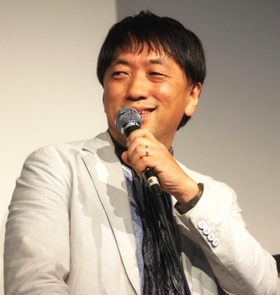 IGARASHI: It might be of big importance at what age people experience this disaster. It is easier for people that experience this at their younger stage to change their life style compared to people who already have matured.
IGARASHI: It might be of big importance at what age people experience this disaster. It is easier for people that experience this at their younger stage to change their life style compared to people who already have matured.
MIYADAI: Even though I'm an old man of age 52, I've consciously increased the amount of time I spend with my close friends and family and reduced my sleep. I felt the need to reevaluate my priorities, what are treasures and what are gadgets to me. It may not necessarily seem that way but at least I think I reset my lifestyle based on my reflection.
IGARASHI: You seem to have made a grand change.
TSUDA: I remember Mr. Miyadai being quiet for two or three days after the disaster. And when you started to tweet again, you were all about the issue of nuclear power. Was there some sort of struggle within you?
MIYADAI: If there were any struggle, it was about having my statements taken as false alarm. I thought, if other people would say similar things, I didn't have to state them. For a moment, I thought that it might not be wise to get on such subjects that had chances of being taken as a false alarm. At the same time, I felt responsible for having debated the irrationality and inadequacy of nuclear power policy with the international journalist, Tetsio Jimbo, for about 10 years. I came to decide only to deliver information repeatedly that questions the credibility of the information given by the government and TEPCO. While there was a great deal of the unknown as to the question of "Then, what is the truth?" I took the stance that we need to collect information and analyze it ourselves. There is information in the media overseas that is not available through the Japanese government. People in my neighborhood in Setagaya have German Meteorological Bureau's site bookmarked and I myself check the forecast for radiation plume through that site every night. Why should we need to access their site? If you can imagine Germans relying on Japanese Meteorological Bureau for having their nuclear plant damaged, you can see how weird that is. I wanted to direct people's attention to a "Japanese society that mindlessly tolerates a nuclear plant" beyond the topic of "What to do with nuclear power?"
TSUDA: That's what Mr. Miyadai called The Green Policy right? We know we really need to think about that but how should we turn this into a good opportunity? What's already happened happened so what should we think about in order to move forward?
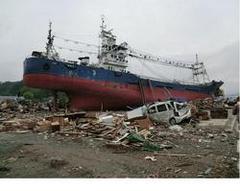 IGARASHI: When we focus only on the tsunami we forget there have been tsunamis in the past and even worse tsunami disasters have occurred in places overseas. But in terms of nuclear plant accidents, this one is quite significant even in the scale of world history. In fact, the rest of the world is treating it as if all of Japan is Fukushima, but there might be some significance. How significant it would be in the end will depend on what happens next. If we're not careful, we'll be back at square one.
IGARASHI: When we focus only on the tsunami we forget there have been tsunamis in the past and even worse tsunami disasters have occurred in places overseas. But in terms of nuclear plant accidents, this one is quite significant even in the scale of world history. In fact, the rest of the world is treating it as if all of Japan is Fukushima, but there might be some significance. How significant it would be in the end will depend on what happens next. If we're not careful, we'll be back at square one.
From Tsuda's Flickr
"Sharing" mentality catching on among young people
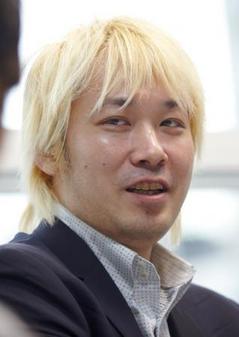 TSUDA: As Mr. Miyadai said in the beginning, collected donations are almost of no help because it is not being distributed at all. What was shocking to me was that there was still flooded water in the town of Minami Soma while we weren't distributing the money because they didn't know what to do with the more than one hundred billion yen the Japanese Red Cross has collected. Because Minami Soma is within the 30km range from the nuclear plant, they can't rent the heavy machineries needed to get the water out before being able to remove the rubble. So there are many areas where the water is just left as is. When I visited about a month ago, the Minami Soma town hall had only received 300 million yen in relief money, which suggests the distribution is not being done right. One theme I've been thinking about is what young people can do from here on. I want young people to rise up with the spirit to create their own media and to become leaders of local communities and go at it with the power of the locals. If that is too much, they could create the sense of being an involved party. For example, they could get that sense of having a family or friends in the area. But what's important is that they each invest in their community based on that reason. They could find a place with a trustworthy leader of local governance for reconstruction. It doesn't have to be rational. By creating the sense of being an involved party it would allow money to flow in. If there is no money in the area, they can communicate that online and create a movement to send money where it's needed. I think information will flow better if young people voluntarily do this.
TSUDA: As Mr. Miyadai said in the beginning, collected donations are almost of no help because it is not being distributed at all. What was shocking to me was that there was still flooded water in the town of Minami Soma while we weren't distributing the money because they didn't know what to do with the more than one hundred billion yen the Japanese Red Cross has collected. Because Minami Soma is within the 30km range from the nuclear plant, they can't rent the heavy machineries needed to get the water out before being able to remove the rubble. So there are many areas where the water is just left as is. When I visited about a month ago, the Minami Soma town hall had only received 300 million yen in relief money, which suggests the distribution is not being done right. One theme I've been thinking about is what young people can do from here on. I want young people to rise up with the spirit to create their own media and to become leaders of local communities and go at it with the power of the locals. If that is too much, they could create the sense of being an involved party. For example, they could get that sense of having a family or friends in the area. But what's important is that they each invest in their community based on that reason. They could find a place with a trustworthy leader of local governance for reconstruction. It doesn't have to be rational. By creating the sense of being an involved party it would allow money to flow in. If there is no money in the area, they can communicate that online and create a movement to send money where it's needed. I think information will flow better if young people voluntarily do this.
MIYADAI: I agree. There is positive information that suggests that as well. In the past three years there's been a movement called "share house" spreading fast amongst young people and the number of young people accustomed to "sharing" is increasing. In response to this disaster, the actions of these young people could become a clue.
As I said in the beginning, the reason why donations and supply rations are not distributed well at the marginal end is because people who are not familiar with a sense of sharing create conflicts among each other. On the other hand, the shelters run by religious organizations, such as temples, were rather peaceful because they're familiar with sharing and are able to say, "after you." Although it is a common sensibility to say, "after you," in any country, it is hard for people to practice it without having the commonality of sharing, particularly in Japan. Since we don't have the custom of Christian Caritas (neighborly love) where contributions are made to people without a sharing premise, in another words "charity," is prescribed, we're not used to saying "after you" unless we have the premise of sharing. You can rely on whatever kind of mental basis, but it is extremely important for people to first create a relationship where you share something with others and refer to them as "us." This is important not only for the issue of donation and supply ration distributions, but also in general when the government and market system become unreliable and you are forced to rely on your social capital, the size and the depth of what people share becomes crucial.
IGARASHI: During the earthquake disaster, our students' share house happened to be restored immediately and became useful for others. The number of share houses increased afterwards.
TSUDA: I have a question for Mr. Miyadai. While there's much attention in social media such as Twitter and Facebook, I think it is becoming a harder time for introversive young people to live in a way since, for example, the number of followers can be linked to people's influence or social capital. The tendency for monopolization by people with higher communication skills is speeding up. Is there a way for people with less communication skills to acquire social capital or surviving skills by using the internet media but in a different format than the current one?
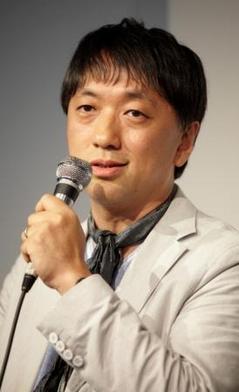 MIYADAI: I think there is. There are a lot of students in my seminar that are associated with a share house called Shibu-house. All share houses and including Shibu-house are inseparable from social network services like Twitter and Facebook. For example, they announce parties and events on Facebook, which get shared and introduced to others. That is how they have been expanding.
MIYADAI: I think there is. There are a lot of students in my seminar that are associated with a share house called Shibu-house. All share houses and including Shibu-house are inseparable from social network services like Twitter and Facebook. For example, they announce parties and events on Facebook, which get shared and introduced to others. That is how they have been expanding.
If you look at the way people actually share their space in share houses, it is quite different from what we know as a "room share" that became common since the 1980's in that their privacy is very limited and they share most things like computers with the only personal possession being a cellphone. It also surprises me that people who gather here are not necessarily social and there are some weirdos. Even though young people have been said to have low tolerability to noise, the fact that this noisy chaotic share house is in the works is a bright spot. This is a new offline communication that wouldn't have been possible without online communications. I hope for the emergence of young upcoming researchers who will study and tell us about when and how this inseparable relationship between the share houses and social networking services arose and what elements can increase the speed of it.
TSUDA: There's also another question of whether this phenomenon occurring in big cities can be exportable to Tohoku and other local regions. It is definitely interesting. I know someone who started a blog from a share house which became quite known, which led to an emergence of a new community. We might be able to find more possibilities in places where minimal communities can maximize their activities.
MIYADAI: In terms of share houses, there will be a challenge for them in the next five years or so. Say, when couples that get together in a share house have a baby, would they be able to fill in the disparity that has been existing between Japan and other countries, which involves the question of whether or not to accept various new family configurations such as single motherhood. For example, there were less than two percent of all children that were born from single mothers in both Italy and Japan in the 70s. And while they are now at about 25% in Italy, the percentage of those children in Japan haven't changed much to this day. Countries where that number has changed such as France and Sweden (where half of the children come from single mothers) have conquered the problem of a birth rate drop completely. However, when I say single motherhood, it does not mean that these families always consist of only a mother and a child but they include various other family forms. The point is whether the share house can provide a great example of children growing up in various forms of "family style relationships".
TSUDA: If the law could change and back up the idea....
MIYADAI: That's right. In fact, this has a lot to do with the legal issues such as child custody, parents' duty of support, duty of proper education, tax exemption, expense for parental support, and so on. Therefore, I'm curious whether share-houses can be accepted by people on a full-scale where the legal system would facilitate parenting within it.
TSUDA: It may be possible that a new open style "Ko (association)" could develop from it, in a style similar to the "association" that once existed in the Genroku era, if the share house gets acknowledged in a full-scale way.
Expectations for documentation and creativity: How we communicate with the rest of the world after the earthquake disaster
IGARASHI: Lastly, following what we just discussed, can we talk about what we should communicate with the rest of the world? Or is there anything you want to say about the relationship between Japan and the countries overseas?
MIYADAI: I happen to write film reviews and have noticed there is an issue for screenwriters as well as other writers where they can't work in the same way before and after the disaster. Say even with love stories, the story can't be written without mentioning this disaster any more. Values and norms can't be talked about without reference to the disaster. Or more specifically, they cannot create drama shows or movies without the norms and values for people as their paraphernalia. It wouldn't survive even if they did. I think this points out a new stage for communications.
As Kiichiro Morikawa stated, things of Otaku-style may be wiped out from here. We don't know this yet but for example, in the beginning of 1995, when we had the Great Hanshin Awaji Earthquake and Tokyo subway sarin gas attack by Aum Shinrikyo happening one after the other, Evangelion aired on TV about six months later. Even though the plan for it, of course, had been built before that earthquake and sarin disaster, many people thought that Evangelion was an expression incorporating those major events and therefore it became a reference as an important art.. Internationally, people are paying attention to whether we would have that type of expression coming out of the Great East Japan Earthquake and so am I. I truly hope that things will blossom for those anime artists and screenwriters around me who are struggling hard to figure out ways to bring in this disaster.
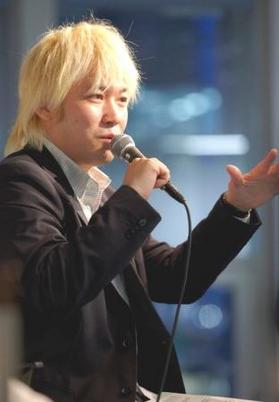 TSUDA: While I'm a bleached blonde, I'm not good with English at all, embarrassingly. Although I want to, I have been feeling my limit for international communications. However, as I travelled through the affected areas, I felt the importance of documenting not only interviews but photographic images. There's a movement by the disaster victims in the Tohoku area using Creative Commons licensing so that they can document current situations photographically, share them, and use them freely. As I wanted to support that movement, I have been putting my photos onto Flickr, a photo sharing website in English.
TSUDA: While I'm a bleached blonde, I'm not good with English at all, embarrassingly. Although I want to, I have been feeling my limit for international communications. However, as I travelled through the affected areas, I felt the importance of documenting not only interviews but photographic images. There's a movement by the disaster victims in the Tohoku area using Creative Commons licensing so that they can document current situations photographically, share them, and use them freely. As I wanted to support that movement, I have been putting my photos onto Flickr, a photo sharing website in English.
In Flickr, you can upload multiple photos at once, add "geotag," and make them copy-right free automatically using Creative Commons. Not only it is a good system for free usage of photo-only content but also highly shared among English speaking countries. I got a message through Flickr from an artist in Hungary the other day asking, "I saw a striking scene in your photo, could I use them in our exhibit?" and I used the translation feature online to reply. Apparently my photos will be used in various different ways which were totally unexpected. With this disaster, there is no question that neither mass media nor social media has been able to cover the entire news because the entirety of East Japan was affected. But the least we can do is to upload information online. What I want to do from now on is to have many workshops about where we provide people with video cameras and Macs and do video editing collectively. Then we can keep shooting and uploading to YouTube or Ustream, which hopefully would spread to the English speaking countries. What's great about the internet is that if you place various pieces of information out there, someone will find it. Therefore I think it's quite important to keep spreading the information and there's a lot young people can do there. If more information comes out and is unorganized, we will organize it. I am hoping for someone young to come forward to be the hub for organizing information and if that idea could eventually spread to the government, we could hope for things to change at least a little bit.
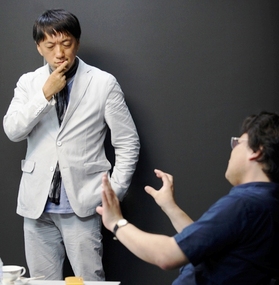 MIYADAI: If we connect Mr. Igarashi's talk about past memories to what Mr. Tsuda has just talked about, what's definitely different about the current civilized society from the past is that we have memories of occurrences in raw and graphic? footages, which help us remember what happened. But unfortunately, there are people who are already saying, "We should hold back on moving images of the tsunami because it is traumatic for our children." There's a factual societal consciousness theory behind this where Japan has eliminated matters of noise, chaos, and risk as much as possible since around the 80's to achieve a flat and clean living space.
MIYADAI: If we connect Mr. Igarashi's talk about past memories to what Mr. Tsuda has just talked about, what's definitely different about the current civilized society from the past is that we have memories of occurrences in raw and graphic? footages, which help us remember what happened. But unfortunately, there are people who are already saying, "We should hold back on moving images of the tsunami because it is traumatic for our children." There's a factual societal consciousness theory behind this where Japan has eliminated matters of noise, chaos, and risk as much as possible since around the 80's to achieve a flat and clean living space.
TSUDA: They would post images of dead bodies on The New York Times' site but never in the Japanese media.
MIYADAI: That's right. This is another bad custom of our mindset where people would vocalize, "Don't show such footages." It is possible for us not to be able to use those footages as a resource for passing on stories due to the dominating atmosphere of "we don't want to see those things." I think it's very important to prepare to resist this feeling in the air and keep these raw graphic resources to leave unforgettable memories.
IGARASHI: In conclusion, there are two things I want to add from an architectural standpoint. One is that while Japanese architects are appraised quite highly, what would happen in the affected areas from here on is still unknown, but what architects can contribute to this would draw attention from the world and I hope we can do so. The other point is related to that memory we talked about. In Rikuzen Takata, for example, there's nothing left and for areas where wooden buildings were swept away, realistically, no one would know what had happened there 10 years from now. But the big clump of concrete in Onagawa I mentioned earlier could remain for at least a 100 years. I hope for these types of tangible elements to be kept so that they can communicate to the next generations through space and imagination even when the information system gets totally shut down. I think that's one way to retain memory.
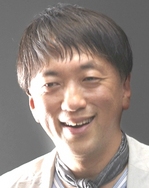 Shinji Miyadai
Shinji Miyadai
Sociologist. Film Critic. Professor at Tokyo Metropolitan University.
He was born in Sendai City in1959 and received a Ph.D. degree in sociology at Tokyo University. He has written many books including "Drawbacks of Japan" "Disengagement from Nuclear Powered Society - Encouraging Natural Energy and Community Government (Co-author)"
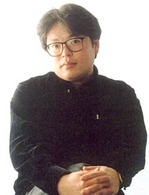 Taro Igarashi
Taro Igarashi
Critic of architecture and architecture history. Professor at Graduate School of Engineering, Tohoku University.
He was born in Paris, France, in 1967.
Author of "Invisible Earthquake Disaster" and more.
La Biennale di Venezia 2011, 11th Architecture Show Commissioner
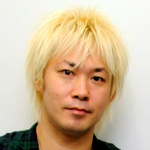 Daisuke Tsuda
Daisuke Tsuda
Media Journalist. Visiting Instructor at Graduate School of Politics, Journalism, Waseda University.
Born in Tokyo in 1973.
Author of "Theory of Twitter Society"
Photo by Kenichi Aikawa
Related Articles
Related Events
Keywords
- Culture and Society
- Language
- Medical/Health
- Politics
- Economics/Industry
- Education/Children
- Social Securities/Social Welfare
- Natural Environment
- Philosophy/Religion
- History
- NPO/NGO
- Region
- Cultural Diversity
- Peacebuilding
- Social Enterprise
- Japan
- 3.11
- Great East Japan Earthquake
- earthquake
- tsunami
- nuclear power plant
- Shinji Miyadai
- Taro Igarashi
- Daisuke Tsuda
- Kesennuma
- Onagawa
- Minamisoma
- Minamisanriku
- Ishinomaki
- Flickr
- social media
- Tohoku University
- Tokyo Metropolitan University
- Waseda University
- sociology
- religion
Back Issues
- 2023.12. 7 Movie Theaters aroun…
- 2023.6.16 The 49th Japan Found…
- 2023.4.24 The 49th Japan Found…
- 2022.12.27 Living Together with…
- 2022.12.27 Living Together with…
- 2022.8.12 Inner Diversity <…
- 2022.3.31 The 48th Japan Found…
- 2022.3.29 Beyond Disasters - T…
- 2021.11.29 Crossing Borders, En…
- 2021.4.13 Crossing Borders, En…


